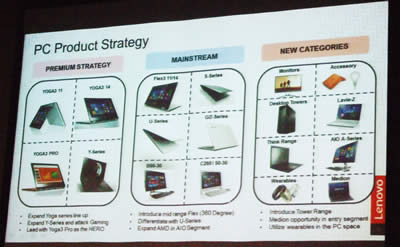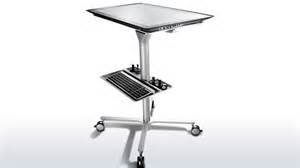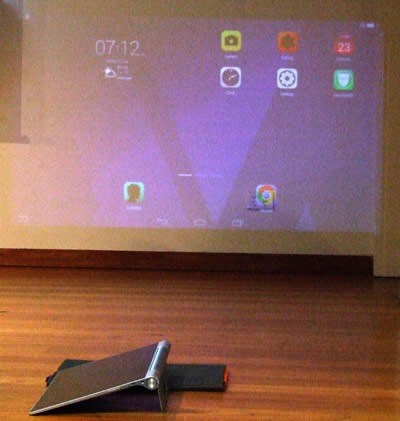Monthly Main Meeting Highlights
Welcome to our June 2015 Main Meeting.
As promised last month, Lenovo

paid a personal visit to show us their great range of products.
Lindsay Tobin,

the Production and Marketing Manager Australia, gave the group an in-depth view of Lenovo, Lindsay started with how Lenovo has grown to become the leading computer manufacturer in the world.
This chart tells some of the story.

In 1981 Lenovo acquired the IBM PC business, and a steady growth has seen it gain companies like NEC and EMC which made the Iomega drives. They also acquired Medion, the German electronics company. This is the brand mostly commonly sold at Aldi.
In the last few years Lenovo took over Motorola and the IBM System X which is the IBM range of computer servers. They are now fully integrated into the Lenovo range. Lindsay believed that Lenovo was now “uniquely placed to provide a complete product solution to business”. Here is a Wikipeda site explaining the various take overs.
The Lenovo slogan for Techworld was “Innovation never stands still”. Lindsay gave us a brief run down on the conference. Some of the announcements included the “smartcast” phone. It allows you to project on any surface.

He spoke about how so many companies outsource their Research and development (R&D) while Lenovo does its R&D “in house”. As an example, he spoke about the redesign of the ThinkPad fan using variable pitch blades to extract more heat out of the laptop.
We then had a good look at the consumer product range.

Only six months from the launch of the consumer range in Australia Lenovo have around 15% market share.
In a rundown on the main products Lindsay spoke about the Yoga range, the Y series for casual gamers and the Horizon Table PC. Not to be confused with the tablet PC, the Horizon PC is best described as a flat screen TV laid on its back. It has a 27” screen and is designed for multi users. It has found a use in museums for interactive displays and for map reading.

Lindsay started with the Yoga range, calling our attention to the Yoga Projector PC on display in the corner.

He then described the Yoga 2, noting how the stand had a hole in it which allows one to hang the tablet on a hook so you could for example read a receipt while you are cooking.

On a question about battery life, Lindsay spoke about how the benchmarks have changed. Of old, a 12 hour benchmark would actually see a battery last around 4 to 5 hours. Around 2013 the benchmark was changed. He suggested, if you are buying, ask the vendor what rating standard was used. If it was before 2012 it will not be accurate. With the Lenovo batteries the Yoga could deliver around 7 hours and some products in the Thinkpads could last around 10 hours. Asked about failure and replacement, he said a battery is not considered to have failed if it still delivers over 50%. If and when it does fail it can be replaced but as it is integrated into the machine it requires a service to be replaced.
We then went on to the commercial range, including the Thinkpad. Since Lenovo took over the Thinkpad brand from IBM, the range has grown. Lindsay mentioned the X 300,

then the X1 Carbon Gen ,now in its third version and the helix convertibles

The think range is about reliability and toughness of design. The range is designed in Japan with R & D based in Yokohama
Lenovo also has Thinkpad models for education. They sold around 4000 of the X131e

to the Education Dept. While most people assume the business market is tough on computers, Lenovo found it was nothing in comparison with the School environment. Students tended to throw them out of buses or use them as goal posts. They found the hinges, designed for 30000 openings or four years didn’t last the distance in schools. This prompted the R & D people to come to Australia, going into schools to study why it was such a tough environment. Naturally they redesigned the hinge and created a complete new model, the 11e. It is designed for around 50000 openings and while it’s not the cheapest, school laptop it will last.

.
Lindsey was using the X1 Carbon for his presentation. It is the thinnest and lightest Ultrabook in the market. It’s called the carbon gen because it’s made of carbon fibre
In the commercial and business range Lenovo are developing new storage with SSD hard drives and the new PCI-e bus or interface. The PCI-e replaces the old connection between the hard drive and the computer which was designed for more mechanical drives. It delivers around three times the access speed.
The X1 comes with a high resolution screen. It has around a 10 hour battery life and comes with the “rapidcharge” system giving a zero to 80% in 30 minutes.
One of the last products mentioned was the Lenovo Tiny,
the compact mini computers you can put anywhere,. Simply connect your old monitor to the tiny. The concept is to have a replaceable processor for any all in one computer. If you need to upgrade simply slip the bigger “Tiny” into the slot on the monitor.
To finish off Lindsay spoke about Lenovo’s DOit apps, the highlight of which is the new, REACHit app.
REACHit is being developed to enhance the features of the Windows 10 Cortana voice search.
and WRITEit
which allows you to write on any Lenovo pen enabled device.
There are several other DOit apps including
which “allows you to send content including files, photos, video and documents, at lightning fast speed”, its free and is available on Windows, Android and Apple.
The other apps are Secureit, Syncit, Snapit and Seeit
Here is a list of the DOit apps
The Raffle
Thanks to Lenovo one of our members got to take home a Lenovo Miix 2 10.1-inch Windows convertible Tablet computer, originally valued at $599

Tonight the lucky winner was

Roland
